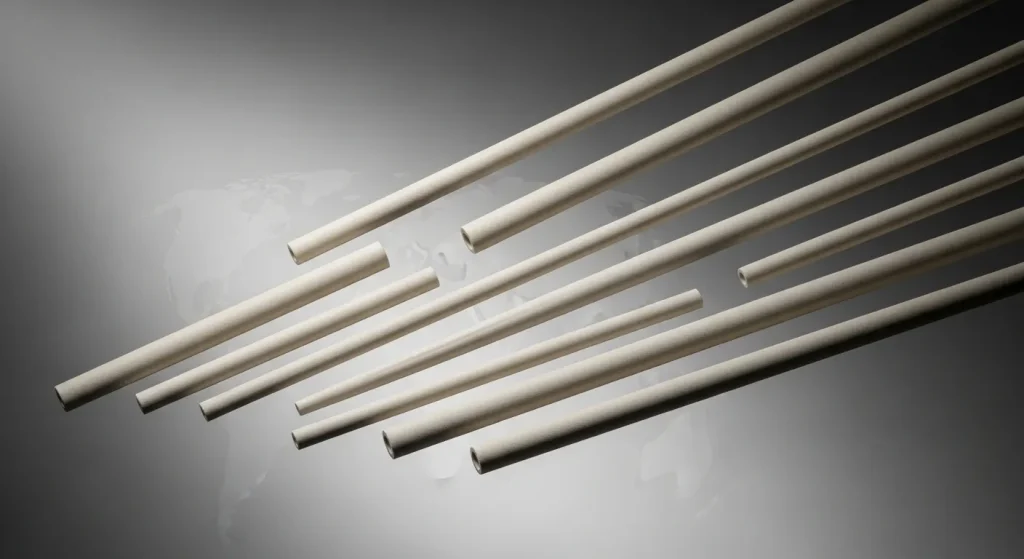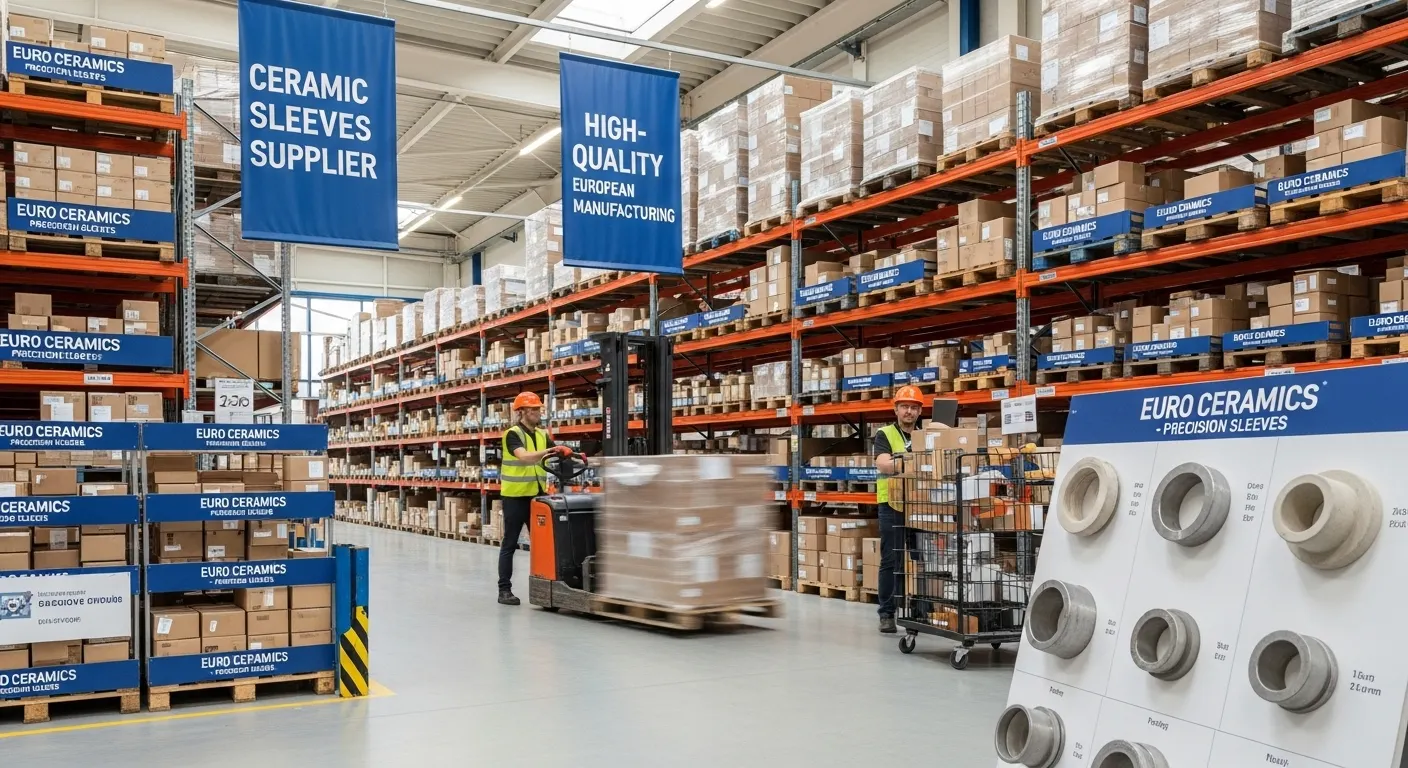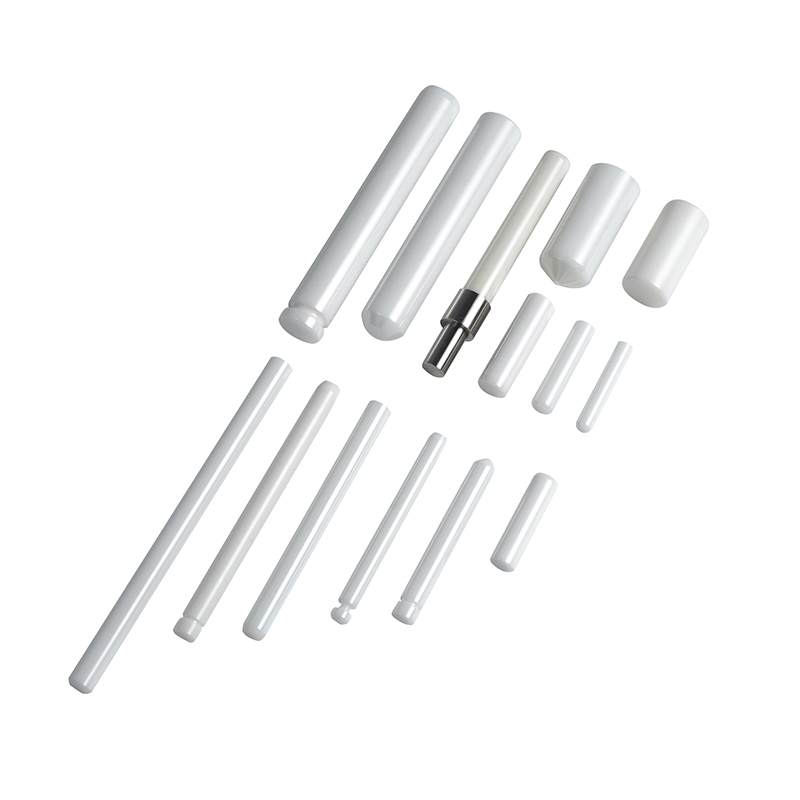Ceramic Rods: High-Strength, Custom, and Industrial Applications Across the Globe
Ceramic rods are high-performance engineering components. They are designed to function in extreme environments. Metals and plastics often fail in these conditions. These rods serve as a foundational material. They are used in a vast range of industries. This includes aerospace, medical, chemical, and manufacturing. The unique properties of technical ceramics make these rods indispensable. They offer high strength, extreme temperature resistance, and electrical insulation.

This guide explores the world of advanced ceramic rods. We will cover the core materials that define their performance. We will examine the manufacturing processes that create them. I will also detail their critical industrial applications. Understanding these components is key to solving complex engineering challenges.
What Are Ceramic Rods?
Ceramic rods are dense, cylindrical components. They are made from highly purified and processed technical ceramics. These materials are not the same as traditional pottery or household ceramics. They are engineered for specific performance traits. Rods can be solid cylinders. They can also be hollow tubes.
Their primary function is to provide structural support. They also insulate or act as wear components. They operate in environments that are too hot, corrosive, or electrically demanding for other materials. Their stability and long service life make them a cost-effective solution. They are used for long-term reliability.
Why Use Ceramic Over Metal or Plastic?
Engineers choose ceramic rods for several clear reasons. Metals corrode, conduct electricity, and soften at high temperatures. Plastics melt, creep under load, and degrade in UV light. Ceramic rods solve these problems.
- Thermal Stability: They maintain their strength at temperatures over 1500°C.
- Electrical Insulation: They are excellent dielectrics, blocking the flow of electricity.
- Wear Resistance: They are extremely hard, resisting abrasion and wear.
- Chemical Inertness: They do not react with most acids, alkalis, or chemicals.
The Role of an Industrial Ceramic Rod
An industrial ceramic rod is a component designed for work. It is not a decorative item. Its purpose is purely functional. It may serve as a furnace support. We could be a shaft in a chemical pump. It might be an insulator in a power grid. The "industrial" label signifies its toughness. It is built for reliability and a long operational life. These components are the unseen heroes in heavy manufacturing.
Core Materials Defining Ceramic Rod Performance
The properties of a ceramic rod are defined by its material. The two most common materials for high-performance rods are alumina and zirconia.
Alumina (Aluminum Oxide): The Industry Workhorse
Alumina (Al2O3) is the most widely used technical ceramic. It is valued for its excellent balance of properties. It is also cost-effective. Alumina is known for its high hardness and great wear resistance. It is also an exceptional electrical insulator.
Understanding Alumina Ceramic Rods
Alumina ceramic rods are the default choice for many industrial uses. Their performance is often tied to their purity.
- 95% Alumina: A common grade with a good balance of properties.
- 99% Alumina: Offers better electrical insulation and wear resistance.
- 99.5%+ Alumina: High-purity grades are used for medical and semiconductor applications. They offer superior chemical resistance.
Alumina rods are thermally conductive. They can dissipate heat. This makes them useful in some electronic applications. They are stable in both oxidizing and reducing atmospheres.
Zirconia (Zirconium Oxide): For Extreme Toughness
Zirconia (ZrO2) is a premium ceramic material. It is known for one property above all: toughness. While most ceramics are brittle, zirconia is different. It is often stabilized with yttria (Y-TZP). This gives it a unique ability to resist cracking.
The Advantages of Zirconia Ceramic Rods
Zirconia-ceramic-rods are used when alumina is not tough enough.
- High Fracture Toughness: It resists impact and mechanical stress. This is due to a process called "transformation toughening."
- Low Thermal Conductivity: Unlike alumina, zirconia is a thermal insulator. It blocks heat very effectively.
- Similar Thermal Expansion to Steel: This allows ceramic-to-metal assemblies to be joined.
- High Strength: It has very high flexural strength.
Zirconia rods are ideal for mechanical components. This includes shafts, plungers, and fixtures. They are also biocompatible, making them useful for medical implants.
Other Advanced Materials
Beyond alumina and zirconia, other ceramics are used.
- Silicon Carbide (SiC): Known for its extreme hardness. It also has excellent thermal conductivity. It is used for high-temperature heating elements and wear parts.
- Silicon Nitride (Si3N4): Has the best thermal shock resistance. It can be heated and cooled rapidly without cracking. It is used in automotive engines and ball bearings.
The Manufacturing Process: From Powder to Part
Ceramic rods are not cast or forged like metals. They are created from fine powders. This is a multi-stage, high-control process.
Material Formulation and Mixing
The process begins with ultra-pure ceramic powders. These powders are often in the sub-micron range. They are mixed with binders and other agents. This creates a consistent, moldable slurry or paste. The quality of this initial mix is critical.
Forming Methods: Extrusion and Isostatic Pressing
The mixed material must be shaped into a "green" part.
- Extrusion: This is the most common method for rods. The ceramic paste is forced through a die. The die has a circular opening. This creates a long, continuous green rod. It is then cut to the desired length.
- Isostatic Pressing: The ceramic powder is placed in a flexible mold. The mold is then subjected to high pressure from all sides. This creates a very uniform, dense green part.
Sintering: The Critical Thermal Stage
The green rod is fragile. It is a mix of ceramic powder and binder. It must be fired.
- Debinding: The rod is heated slowly. This process burns away the polymer binder.
- Sintering: The temperature is raised much higher. This is often over 1600°C. At this heat, the ceramic particles fuse. The part shrinks by 15-25%. It becomes incredibly hard and dense.
Precision Finishing: Diamond Grinding
After sintering, the rod is hard, but its dimensions may not be perfect. It is "as-Fired." For high-precision applications, it must be finished.
- Centerless Grinding: The rod is spun between diamond-coated wheels. This process grinds the outer diameter. It can achieve tolerances of just a few microns. It also creates a very smooth surface finish.
- Lapping and Polishing: For an even smoother finish, the rod can be lapped. This is essential for sealing applications.
Key Properties of High-Strength Ceramic Rods
Engineers select ceramic rods based on specific performance data. These properties define their function.
Mechanical Strength (Flexural, Compressive)
Ceramics are exceptionally strong in compression. They are less strong in tension. Flexural strength is a key metric. It measures a rod's ability to resist bending.
Defining High-Strength Ceramic Rods
High strength ceramic rods are those made from advanced materials. Zirconia typically has a higher flexural strength than alumina. Silicon nitride is even stronger. This strength allows the rods to be used as structural components, not just insulators.
Thermal Stability and Shock Resistance
This is a primary advantage.
- Maximum Use Temperature: Alumina can be used continuously at 1500°C or more.
- Thermal Shock: This is the material's ability to survive rapid temperature changes. Silicon nitride excels here.
Electrical Insulation Properties
Technical ceramics are excellent electrical insulators. They have a high dielectric strength. This means they can withstand a high voltage before breaking down. This makes them ideal for power grid components.
Chemical and Corrosion Resistance
Ceramic rods are chemically inert. We do not rust or corrode. They can be used to stir molten metals. They can be submerged in strong acids. This is a key advantage over stainless steel.
Industrial Applications Across Sectors
The unique combination of properties makes ceramic rods useful everywhere.
Structural Components in High-Temperature Furnaces
This is a major application.
- Supports: Ceramic rods are used as supports for products inside a furnace.
- Rollers: Long ceramic tubes (hollow rods) are used. They transport materials like glass through a hot furnace.
- Heating Element Supports: Rods hold and insulate electric heating elements.
Shafts, Axles, and Rollers in Manufacturing
The hardness and wear resistance of ceramic rods are key.
- Pump Shafts: In chemical pumps, a zirconia rod will outlast a metal shaft. It will not corrode.
- Axles and Bearings: Ceramic rods are used as axles in high-wear environments.
- Plungers and Pistons: Ceramic plungers are used for high-pressure pumps.
Electrical Insulators in Power Systems
Alumina rods are used as standoff insulators. They support high-voltage wires. They prevent electricity from arcing to the ground. Their use is critical in power plants and substations.
Medical and Laboratory Equipment
- Biocompatibility: Zirconia is biocompatible. It is not rejected by the human body. It is used for medical implants.
- Laboratory Stirrers: A ceramic rod can stir a hot, corrosive chemical solution.
- Analysis Tools: Rods are used in thermal analysis equipment.
Advanced and Niche Uses
The field of ceramics is always advancing. Some materials are even processed to be clear. This creates advanced optical uses for transparent ceramics. These are used in lasers and high-tech sensors.
The Importance of Custom Ceramic Rods
Not all applications can use a standard, off-the-shelf rod. This is where customization becomes essential.
What Defines Custom Ceramic Rods?
Custom ceramic rods are parts made to a customer's specific drawing. This goes beyond just changing the length or diameter.
Machining Non-Standard Features
After sintering, the hard ceramic must be diamond-ground. A custom manufacturer can add complex features.
- Threads: Internal or external threads can be ground into the rod.
- Grooves: Grooves for o-rings or retaining clips.
- Holes: Cross-drilled holes for pins.
- Flats: Flats can be ground onto the rod for wrenches.
- Tapers: The rod can be tapered to a point.
The Co-Engineering Process
A good custom manufacturer is a partner. We will perform a Design for Manufacturability (DFM) review. They will look at a customer's drawing. They may suggest changes. This can make the part stronger or cheaper to produce.
Sourcing Custom Components Globally
The ability to make custom parts is a high-skill task. Sourcing a custom ceramic rods indonesia supplier, for example, is key. It supports the region's advanced manufacturing. It provides local access to custom-engineered solutions. This eliminates the need for long-distance, complex supply chains.
Ceramic rods are a global commodity. Sourcing them involves navigating a complex international market.
Sourcing Ceramic Rods from High-Volume Hubs
The global supply chain for ceramics is vast. A market for ceramic rods china is well-established. This hub is known for its ability to produce a wide range of standard and custom parts.
Quality Standards for Industrial Ceramic Rods
When sourcing, quality is paramount. A low-cost rod is useless if it fails. An industrial ceramic rods china supplier, for example, must be vetted. They must prove their material purity and dimensional accuracy.
Sourcing in High-Specification Markets
Other markets are known for their focus on high-specification parts.
- The market for ceramic rods usa is strong. It focuses on medical, defense, and aerospace applications.
- The ceramic rods europe market is a leader. It is driven by the automotive and precision machinery sectors.
Sourcing in High-Growth Industrial Regions
As industry expands, so does the need for local suppliers.
- The market for ceramic rods india supports a massive industrial base.
- The market for ceramic rods indonesia is vital. It supplies local petrochemical, power, and manufacturing plants.
A global company will often use a diverse supply chain. This balances cost, quality, and logistics.
How to Select a Ceramic Rod Supplier
Choosing the right supplier is a critical decision.
- Verify Material Certification: Always ask for a Technical Data Sheet (TDS). This document proves the material's properties.
- Assess Manufacturing Capabilities: Can the supplier meet your tolerances? Ask for their standard tolerance.
- ISO 9001 and Quality Management: A supplier must be ISO 9001 certified. This proves they have a quality system.
- Evaluate Technical Support: Can you speak to an engineer? A good supplier is a technical partner.
Conclusion: The Future of Ceramic Rods
Ceramic rods are a foundational industrial component. They are not a single product. They are a wide family of materials. We are engineered for performance. From high-purity alumina ceramic rods to tough zirconia ceramic rods, these parts solve problems. We allow industries to operate at higher temperatures. They allow them to run more efficiently. They last longer than metal or plastic. As technology advances, the demand for these high strength ceramic rods will only continue to grow.
In This Article
- 1 What Are Ceramic Rods?
- 2 Why Use Ceramic Over Metal or Plastic?
- 3 The Role of an Industrial Ceramic Rod
- 4 Core Materials Defining Ceramic Rod Performance
- 5 The Manufacturing Process: From Powder to Part
- 6 Key Properties of High-Strength Ceramic Rods
- 7 Industrial Applications Across Sectors
- 8 The Importance of Custom Ceramic Rods
- 9 Navigating the Global Supply Chain
- 10 How to Select a Ceramic Rod Supplier
- 11 Conclusion: The Future of Ceramic Rods
 English
English 中文
中文





